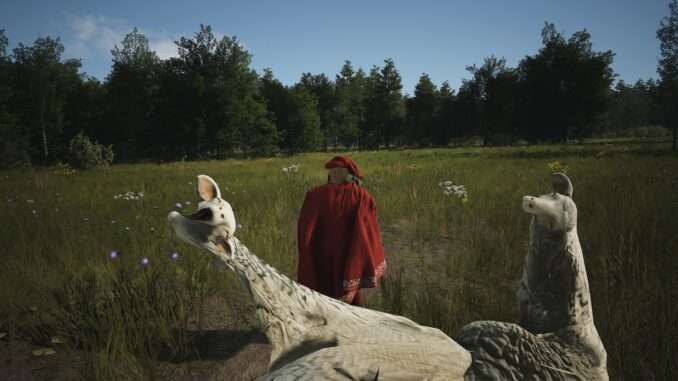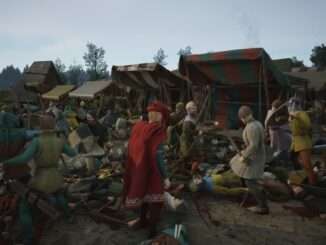
If you are concerned about how to place your peasants then this guide is for you.
Placing Peasants Guide
Сrеdit gоеs to MerchantMan!
I see a lot of people complaining and demanding a refund/tutorial because they’re stuck at housing.
There are 2 important things to pay attention to in order to house your people:
- The house icon in the top left; this shows how many houses you have TOTAL.
- The thumb icon in the top left: this shows your CURRENT approval.
- Step 1. Build 5 burguous plots to house your people.
- Step 2. Get the approval rating to 50% and keep it there for a month in-game.
Some tips
To get higher approval rating the easiest way is to diversify your food sources, try to get berry, meat and some third source (plots large enough will allow for a structure in the back for eggs,carrots, or apples (if unlocked). Building a church is slightly harder but will also improve approval.
You need an Ox to move logs, so if you remove hitching post and it wanders off you’re soft locked and unable to move logs. In fact, I recommend building a 2nd one and buying another Ox really early as moving logs 1 by 1 is extremely time extensive.
If the houses are really far away it may take a while for them to move in.
Make sure your homes are connected to a road. Even better if that road connects to one of the “King’s roads” that are already on the map.
Make sure your people are not starving.
Make sure you have enough logs to build 5 homes, recommend building the logging camp first.
The mini house icon on a plot in the building layout (white areas when laying out building zone) is the option to build a 2nd small home on the plot: You must upgrade the finished tier 1 home to house people in this, otherwise the plot will only house 1 family.
Advanced: Building the manor will add 2 housing in the top left: These do not house families so, if you build the manor subtract 2 from housing amount to get family housing.
This is due to the manor coming with 2 families of servants, they don’t show up in the top left as working families either (I’m not yet sure what they’re for).





For maximum population growth efficiency avoid building your settlement too far from your initial camp so you won’t waste time waiting for people to walk and oxen to drag logs. Staff your granary to improve food distribution efficiency. Build one chicken coop as soon as you have a long burgage plot with a back yard slot; you start earning eggs immediately, unlike vegetables which have to grow, and this will diversify your food. If you’re really struggling with food approval a tanner will turn hides from the hunter into leather that will be sold in a clothing stall in your market. The clothing stall will both generate a few points of approval and satisfy one of the demands needed for upgrading burgage plots to level 2.
If you do all of the above you should have new families moving in to your vacant burgage plots well before the second year.
My peasants aren’t filthy. They’re not clean, per se, but they’re not completely filthy, either. I was able to unlock the Turkish bathhouse in year 2. It should be noted that my pheasants are extremely filthy.
how to spot the kings roads?
You can spot the king’s roads because they’re the roads already on the map when you load a new save, essentially they’re any roads you didn’t create yourself and are necessary for trade.
Also, if you have the second residence add-on built to the plot, once you change the production method (Cobbler, Blacksmith, etc.) it will make both families specialize in that job. This will lock both families into that job and could cause issues with idle villagers, over/under production in different supply chains.